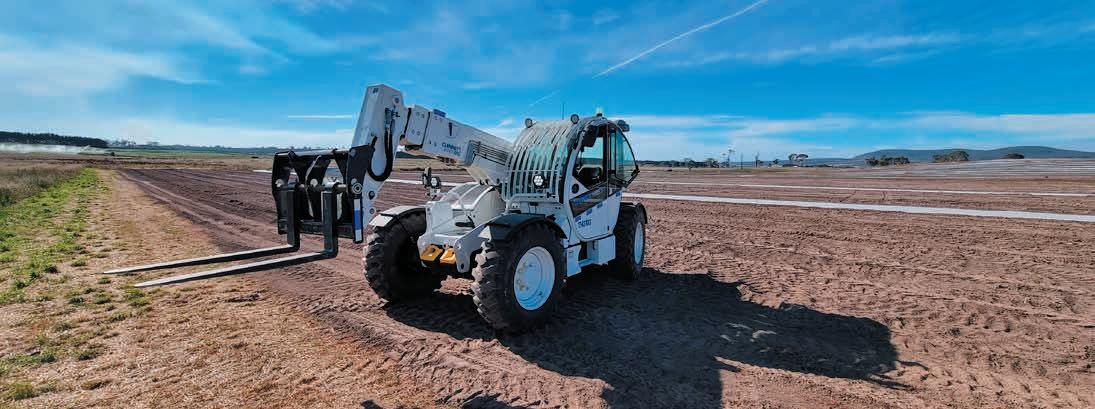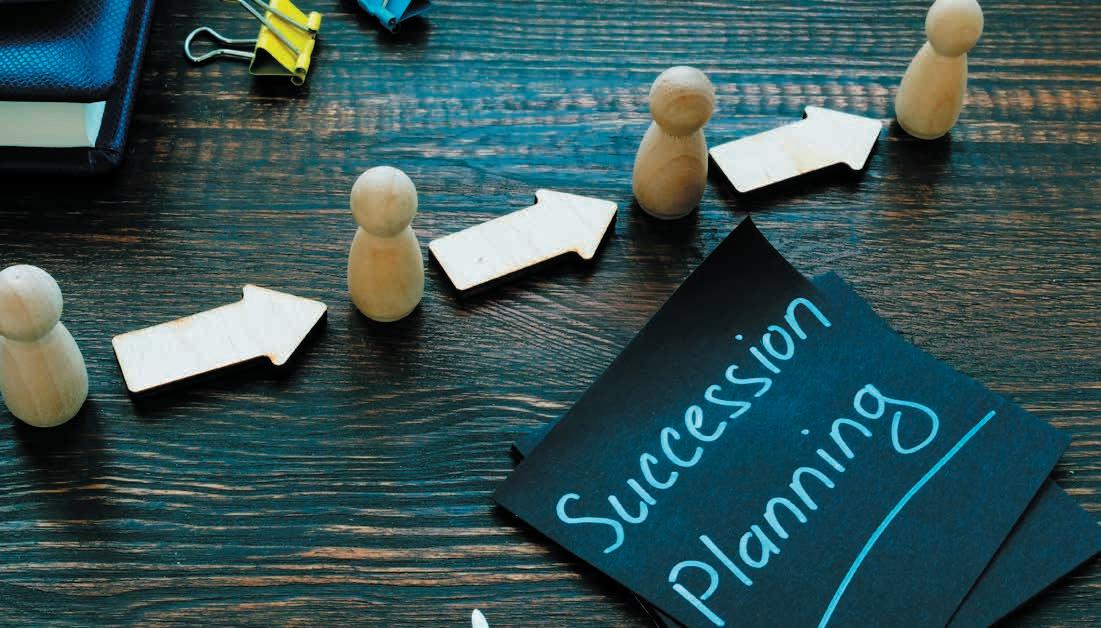
8 minute read
How to depreciate your assets
from HRIA May 2021
The benefits of depreciating your assets
Richard van der Merwe, Lead Partner & David Hinchey, Senior Manager Fordham Business Advisors
The federal treasury announced as part of the 2020-21 federal budget that businesses with an aggregated turnover of less than $5 billion can immediately deduct the cost of eligible new depreciating assets in the first year they are used.
As is often the case with tax laws, the final legislation is complex, and it is important for taxpayers to obtain tailored advice. The following is a broad general overview of the new opportunity provided in the Federal Budget.
Full expensing in the year of first use or installation ready for use applies to the following: • New depreciating assets; • The cost of improvements to existing eligible assets; and • Second-hand assets acquired (only for eligible businesses with an aggregated annual turnover of less than $50 million.
This temporary measure applies to the business portion of assets acquired, or the cost of improvements to eligible depreciating assets, from 7.30pm AEDT on 6 October 2020 to 30 June 2022.
Eligible assets under new full expensing measures
New depreciating assets
New assets acquired and used in Australia that directly relate to the business earning assessable income, first held ready for use by the business between 7.30pm AEDT on 6 October 2020 and 30 June 2022.
The cost of improvements to existing eligible assets
For existing assets you can claim an immediate deduction for the business portion of the cost of improvements incurred between 7.30pm AEDT on 6 October 2020 and 30 June 2022.
If costs are incurred to improve an existing asset in an income year the costs of improvements in that income year can be deducted if you: • Start to use the asset or had it installed ready for use for a taxable purpose in that income year; or • Started to use the asset or had it installed ready for use for a taxable purpose in an earlier income year.
If you deducted the existing asset cost under the Instant Asset Write Off (IAWO) method in an earlier income year, you can still deduct the improvement costs in a later year under the new temporary full expensing measures.
Second-hand assets acquired
If your business’ aggregated turnover is less than $50 million and you start to hold and use an eligible second-hand asset, the business portion of the cost of that asset can be deducted in full under the new temporary full expensing measures. The cost of the asset includes improvements to second-hand assets incurred in the same income year.
How it applies
Excluded Assets not eligible for full expensing depreciation
Assets that are not eligible for FEDA include: • Assets allocated to a low-value depreciation pool or software development pool; • Certain primary production assets (i.e. water facilities, fencing, horticultural
New Full Expensing of Depreciating Assets (FEDA)
Aggregated Turnover Date asset acquired or first held Date asset first used or installed ready for use Asset threshold (cost)
All businesses Less than $5 billion First held from 7.30pm on 6 October 2020 to 30 June 2022
By 30 June 2022 No limit*
*Business related passenger cars Please note the car cost limit for depreciation remains in place, refer below.
plants, or fodder storage assets), unless you are a small business entity who choose to apply the simplified depreciation rules to these assets; • Buildings and other capital works for which you can deduct amounts under
Division 43; • Assets subject to exclusion for preexisting commitments (before 7.30pm on 6 October 2020 – aggregated turnover >$50 million); and • Assets that will never be located in
Australia or will not be used principally in Australia for the principal purpose of carrying on a business.
Disposal and termination of eligible assets expensed in full under FEDA
Consideration received for disposal of asset
Where an asset has been deducted in full under FEDA and then subsequently disposed, the termination value is included in the entity’s assessable income for that financial year. Where an eligible asset is disposed of during the financial year that it has been fully expensed, then a deduction is only allowed for the difference between the initial asset cost and termination value.
Disposal of asset – ceases to be used for any purpose
Where an asset has been deducted in full under FEDA and ceases to be used for any purpose, the termination value is the market value of that asset at that time. Where an asset is considered worthless at the end of its effective life, then the termination value may be nil. Clients should be wary when making a determination that an asset is worthless, as market value substitution rules can apply, for example, when assets that are no longer of use to the business are taken for personal use.
Business related cars
The ATO defines a car as a passenger vehicle, van or tractor designed to carry a load of less than one tonne and fewer than nine passengers. The maximum value you can use for calculating the depreciation claim, depends on the year in which you first used or leased the car. • For the year ended 30 June 2020: $57,581 • For the year ended 30 June 2021: $59,136.
Should you use a trust to run your business?
by: Leigh Adams, Special Counsel, Owen Hodge Lawyers
Weigh up whether a trust structure is right for your business circumstances.
Trusts have been an accepted part of English law since the Crusades and although companies are more common in business, trusts have substantial benefits over companies in a business environment. Some of the benefits and drawbacks are discussed below.
There are many. However, the discretionary trust is probably the most common. Discretionary trusts will have discretionary beneficiaries – those individuals (and possibly companies) who will take income and capital out of the trust subject to the exercise by the trustee of a discretion in their favour.
Tax minimisation
The benefit of discretionary trusts is that income and capital can be distributed to individual beneficiaries in accordance with their own needs from time to time. This minimises tax for all involved.
For the past few years, you have been able to stream capital gains and franked dividend to nominated beneficiaries. This further enhances the tax benefits of discretionary trusts.
Capital Gain Tax benefits
Another significant benefit of discretionary trusts is that the 50% CGT discount will apply to individuals who are beneficiaries where the asset has been held by the trustee for at least 12 months. However this benefit does not apply to companies which are beneficiaries.
Undistributed income is generally taxed in the hands of the trustee at the rate of 45%. Accordingly the trustee has a good reason to distribute income in each financial year unless there is a good reason to accumulate it.
You can protect capital
The benefits of a discretionary trust extend to protecting the income and capital of the trust against the divorce claims of the ex-spouse of a beneficiary.
The entitlement to income and capital of such a beneficiary can be discontinued for the duration of the family law proceedings and whilst the Family Court may consider the potential entitlement to a distribution as a financial resource, the capital of the trust is generally preserved.
The capital of the discretionary trust is protected against the bankruptcy of a discretionary beneficiary. The trustee simply refrains from distributing to that beneficiary until the end of the bankruptcy.
Having a trusted appointor whose consent is needed for key management decisions can prevent directors of the trustee company turning feral against other stakeholders.
Trusts can change with the times
consequences and such changes can include the adding and removal of beneficiaries so long as the amendments are made pursuant to a valid exercise of the power of amendment found in the trust deed.
Having a wide capacity to amend the trust deed is important because it gives the trustee power to upgrade the trust deed from time to time to reflect changes to the law, including tax law.
If your turnover is less than $10m, and you want to change your business structure from a company to a trust (or vice versa) then you may be eligible for CGT roll-over relief. One key pre-requisite is that there be no change in the ultimate economic ownership of the new structure.
Protection against trust creditors
In some states, trust deeds can prevent a trustee from being indemnified against trade creditor claims out of the trust assets. This can be an important asset protection mechanism. However, the cases in New South Wales generally indicate that such a try-on does not work in that state.
Trusts can be created with a stamp duty implication of as little as $500.
But if down the track, amendments to a trust deed are made which are too farreaching and cause a change to the ‘charter of rights’ then stamp duty on the full value of the trust assets can be imposed.
What does trust splitting entail?
A hot topic for trusts at the moment is trust splitting whereby within the power given to the trustee by the trust deed, the trustee establishes a sub-trust within the original existing trust such that there is still only (arguably) one trust but different trustees are appointed for different assets.
The splitting of the trust does not generally involve a change to the beneficiaries or to the power conferred on the trustee.
Whether a trust can be split will largely depend on the powers provided in the trust deed to appoint a separate trustee in respect of particular trust assets.
Trust-splitting can be of great assistance from the point of view of asset protection and estate planning.
No one-size fits all, but a close review of the options available is highly recommended when you are starting up a business or considering whether you should change it.





